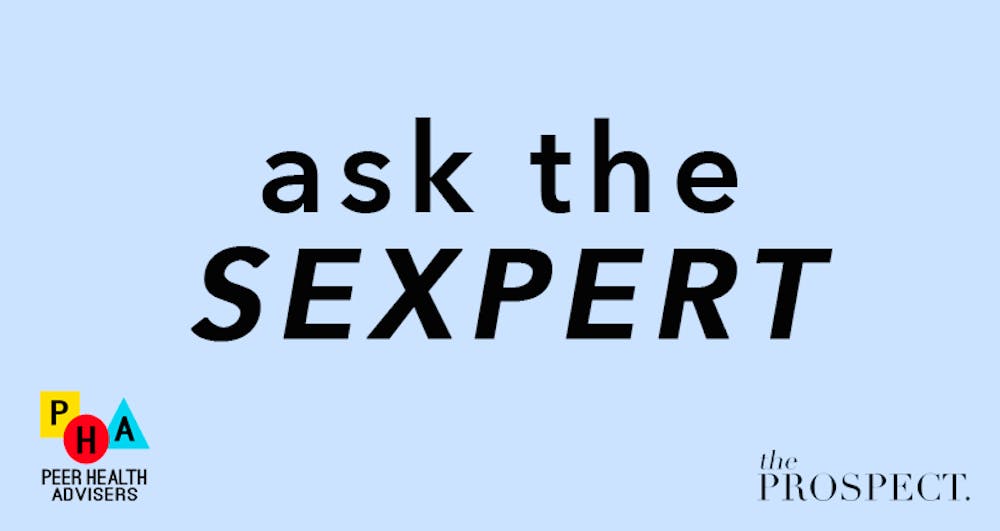I saw an email about groups on campus giving out free menstrual cups, and I was curious about trying one out. I like the idea of having a more sustainable option compared to tampons or pads, but I’m worried about it being messy or uncomfortable to insert or remove. I was also thinking about getting an IUD soon and was wondering if the menstrual cup would interfere with it.
– Curious about Cups
Dear Curious about Cups,
Menstrual cups are a great alternative to pads and tampons and definitely worth trying out if you think they might be right for you! Not only are they more sustainable, but they can also be a super cost-effective option compared to pads and tampons. If you take advantage of the campus initiative, your cup will be free and could last you up to five years with proper cleaning and care! If you buy one later, it will cost anywhere from $6–40 depending on the brand that you chose, meaning you’re still spending less than you would on tampons or pads over several years.
Lots of brands make menstrual cups, and they are typically bell-shaped and made of flexible, medical-grade silicone. Unlike pads and tampons, the cups do not absorb blood but simply collect it. This means it will need to be emptied about every 6–12 hours, depending on how heavy your flow is. If you are interested in tracking your menstrual fluid volume for personal or medical reasons, menstrual cups are a great choice. For many people, menstrual cups can be changed less often than pads or tampons, making them a convenient option! Furthermore, compared to tampons, menstrual cups also have the advantage of reducing period odors.
To insert your cup, you will need to fold it. There are many options for how to do this and lots of online tutorials showing different folding styles. If you are nervous, you can watch videos and/or practice folding your cup before you go to insert it. Don’t be afraid to try a couple of different shapes to find the one that works best for you! Once inserted, simply twist the cup using the stem at the bottom to create an airtight seal against the vaginal canal. If inserted properly, you shouldn’t feel the cup, and it shouldn’t leak. If you experience any discomfort, calmly remove the cup and try again. You can also use lubricant or water on the rim of the cup for easier insertion.
If you are still concerned about the insertion of your cup, you can explore different menstrual cup sizes. The size you choose may be dependent on your age, your anatomy, and whether you have given birth vaginally. Many companies sell small, medium, and large cup sizes and will have specific information to guide you in selecting the appropriate size for you! The size you select may also impact how frequently you have to change the cup.
Mess when removing the cup is definitely a common concern and worth considering if you choose to use a menstrual cup. To remove the cup, simply pull the stem down slightly so that you can squeeze the bottom of the cup to break the seal. This is crucial for an easy and painless removal. Pull down to remove the cup and empty it into the sink or toilet.

Ideally, you should wash the cup with gentle soap and warm water after each use. If you are in a shared or public restroom, this can be a challenge. Many companies sell wipes that can be used to clean the cups inside of the stall. If you are in a pinch, you can wipe the cup out with toilet paper and reinsert, but try to avoid doing this after more than one use and wash thoroughly afterward.
Luckily, because they can be changed less often, you may be able to avoid changing them during the day. If you want privacy, change your cup and wash it with you in the shower! Obviously, menstrual cups are not ideal for everyone, and if doing this would make you uncomfortable, it might be worth sticking to other options.
If you do decide to get an intrauterine device (IUD) as contraception, you probably shouldn’t use a menstrual cup. The suction of the cup creates an increased risk of dislodging or removing your IUD. However, if you still want to use a menstrual cup with an IUD, you could potentially lower your risk of IUD dislodgement by going to your healthcare provider and having your IUD strings shortened. Furthermore, it is important that you are careful when removing the cup and always break the seal before pulling it out.
If you have any further questions or specific concerns about menstrual cups, Sexual Health and Wellness providers at University Health Services are there to help and can provide you with specific advice. You can make an appointment by calling (609) 258-3141.

– The Sexpert
Sources:
https://www.webmd.com/sex/birth-control/features/menstrual-cup-iud
https://www.healthline.com/health/womens-health/menstrual-cup#how-to-use
https://store.lunette.com/blogs/news/how-to-clean-menstrual-cup-in-public-toilet
https://beyouonline.co.uk/blogs/news/how-do-you-fold-a-beyou-menstrual-cup








